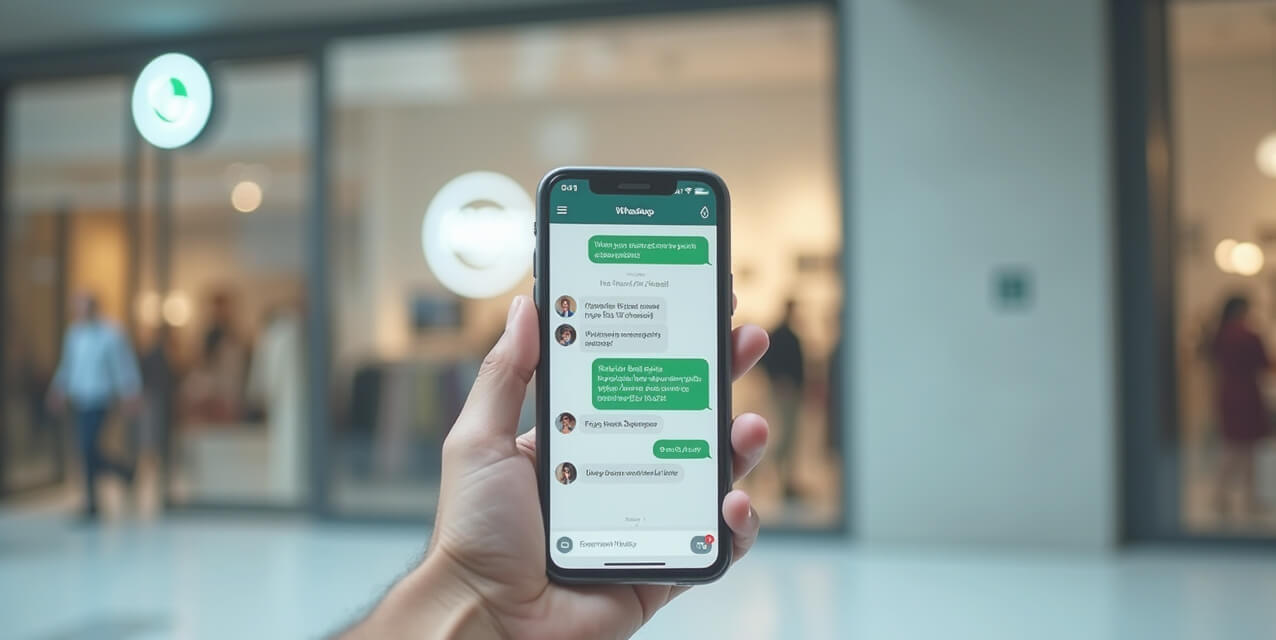Forget Flows. AI Chat That Sells Should Feel Like a Human, Not a Script.
Stop designing chatbot flows—today's AI can sell like a human, not follow a script.

DATE
CATEGORY
HASHTAGS
READING TIME
Chatbots used to rely on rigid decision trees—press 1 for this, tap here for that. But buyers no longer have the patience for robotic scripts or clunky chat flows. In 2025, sales happen through natural, adaptive conversations. To truly convert, your AI assistant must engage like a human: listening, understanding, and guiding in real time. In this post, we explore why structured flows fall flat and how AI-first chat experiences—like those powered by bKlug—are redefining how we sell on WhatsApp.
The Problem with Chat Flows
For years, brands relied on flow-based chatbot builders to automate customer interactions. These systems were structured, predictable, and easy to deploy. But there was a catch: they weren’t built for real conversations.
Flow-based systems often feel transactional. Ask a question, choose from limited options, follow the flowchart. This may have worked for basic support tasks or lead capture—but selling? Not so much.
Why do flows fail to sell?
Because buying isn’t linear. It’s emotional. It’s chaotic. And no one wants to feel like they're talking to a flowchart.
What Today’s Customers Expect
Today’s shoppers are used to fluid digital experiences. On WhatsApp, they expect fast, casual, and human-like interactions. They want real-time answers, visual browsing, and tailored suggestions—not a predetermined path.
According to research, over 70% of consumers expect conversational experiences to match or exceed the speed and relevance of in-store sales assistance. Scripted flows can’t keep up with that standard.
“Conversations that convert don’t follow scripts—they follow the customer.”
The Rise of Adaptive AI Conversations
Modern AI has changed the game. With language models, it’s now possible to create dynamic, unscripted conversations that feel truly personal. These systems understand intent, context, and nuance—just like a real sales rep would.
Instead of relying on pre-written trees, AI-powered chat like bKlug listens, learns, and responds in the moment. It can adapt to product questions, objections, and even shift the conversation based on user mood or tone.
Here’s what that looks like in practice:
- A customer sends a photo of a shoe they like → the AI identifies the style and recommends similar items.
- A user asks about gluten-free snacks → the AI filters the catalog instantly, showing just those options.
- Someone starts with one product in mind → the AI cross-sells or upsells based on browsing behavior.
This isn’t “press 1 to continue.” It’s “what are you looking for today?”—just like in a real store.
Why Flows Create Friction
Flows aren’t just outdated—they’re limiting. They:
- Force unnatural behavior: Users must guess the “right” path to get their answer.
- Break when things go off-script: Unexpected questions often lead to dead ends.
- Require constant upkeep: Brands must update flows manually as products and offers change.
- Fail to personalize: Everyone gets the same experience, regardless of context or history.
With every added branch in a decision tree, complexity rises—and so does user frustration.
AI-Powered Chat Feels Like Magic (But It’s Not)
AI conversations might feel like magic to users, but under the hood, it's all intelligent engineering. Tools like bKlug combine:
- Natural language understanding (NLU)
- Real-time product data access
- Visual and voice communication
- Smart memory for past interactions
This allows the assistant to not only talk like a human, but also think like a sales associate—making real-time suggestions, recalling preferences, and helping users navigate a digital catalog with ease.
And because bKlug integrates with platforms like Shopify, VTEX, WooCommerce, and Nuvemshop, it’s ready to go live in under 2 hours—no scripts required.
What This Means for Your Team
Ditching flows doesn’t just improve user experience—it transforms how teams work.
For marketing:
You no longer need to build and update chatbot journeys. Just plug in your catalog, and the AI takes it from there. Your team can focus on strategy and creativity, not chatbot upkeep.
For support:
Fewer repetitive questions hit your human agents, and complex queries get routed intelligently—thanks to smart handoff.
For sales:
The assistant guides users all the way to checkout, increasing conversion rates without adding headcount.
Rethinking the Metrics
If your chatbot success is measured by “completion rates” of flows, you’re tracking the wrong thing. The real KPI today is conversion through conversation.
Ask yourself:
- Are people finding the right product faster?
- Are carts growing in value?
- Is customer satisfaction improving?
With AI-led chat, it’s not about how many steps users complete—it’s about whether they get what they came for.
Final Thoughts: Forget Flows. Build Trust.
In the end, conversations are about trust. Trust that your brand understands the user. Trust that they’ll get a real answer, not a redirect. Trust that shopping won’t be a struggle.
Flow-based chatbots made sense when AI was limited. But today, brands can meet customers on their terms—not by funneling them through a script, but by engaging in real, responsive conversation.
That’s what bKlug was built for. Not to replace humans—but to act human, at scale.
Want to see how it feels?
Start a conversation with your own brand’s catalog—on WhatsApp, powered by bKlug. Setup is quick. The results are real.




